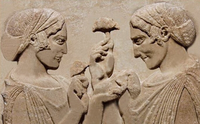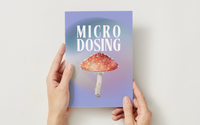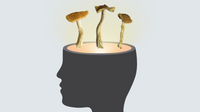Recent posts
-

-
 Amanita Muscaria Microdosing Guide: Safe Dosage, Benefits & MoreBy Psyched WellnessFebruary 17, 2025
Amanita Muscaria Microdosing Guide: Safe Dosage, Benefits & MoreBy Psyched WellnessFebruary 17, 2025 -
 Microdosing Shrooms: How Psilocybin Mushrooms Enhance Mental HealthBy Psyched WellnessJanuary 27, 2025
Microdosing Shrooms: How Psilocybin Mushrooms Enhance Mental HealthBy Psyched WellnessJanuary 27, 2025
Featured articles
Foraging for Mushrooms

Foraging is one of the oldest skills adapted by humans, and it is still very present in today's society. It requires patience, dedication, and a great amount of knowledge on the environment. Foraging the Amanita Muscaria mushrooms is the first step in a long process to creating our product. Our foragers play a fundamental role in bringing the product from the forest floor to your hands.
All About Foraging
Foraging is the act of searching for food in an environment where it is naturally occurring. Prior to the adaptation of agricultural practices, foraging played a very large role in our species survival. Humans had to forage a significant portion of the food they consumed, doing so by relying on passed down knowledge. Fast forward to modern times where foraging food is more difficult than purchasing it at a store. Although it may no longer be used for survival, foraging has increasingly become a hobby and process for obtaining natural products.
Some may argue that foraging is easier now because of the vast amount of information readily available, but it is still a skill; one that requires you to be highly knowledgeable and constantly aware of your surroundings.
Regardless of what you are foraging for, being educated on the environment will determine whether or not you are lucky with your harvest. You must know what ecosystems to look for, and how they may vary based on the time of the year, your geographical location, and climate. This also means being aware of any potential threats in the environment you are foraging in, such as poisonous berries or bears.
Knowing where and when is only half of it though, you must also learn the specific identification skills for what you are foraging. It is especially important when you are harvesting mushrooms as there are a variety of species which look similar but have very different effects on the human body. Misidentifying a mushroom could result in illness, and in extreme cases death.
Foraging Mushrooms
When it comes to foraging mushrooms you must be very knowledgeable about the species you are looking for as different mushrooms grow in different environments. They each require specific soil compositions, amounts of light, temperatures, and moisture levels. Many mushrooms also prefer specific types of trees. For example, portobello mushrooms require lots of sunlight to grow and prefer grasslands, while Amanita Muscaria mushrooms require shade and prefer boreal forests. This is why knowing where to look is important, it can cut your foraging time in half.
Once a mushroom has been found, each feature must be inspected to ensure it has been identified correctly. The color of the cap, spores’ color, presence of a ring on the stalk, and appearance of the gills are some of the many ways which you can distinguish between an edible and poisonous mushroom. If the mushroom has been identified correctly it is harvested by being cut at the base or pulled from the ground. They are then stored in a basket or cloth bag to allow the spores to disperse as you move.
How Are Our Mushrooms Foraged?
The mushrooms we use to create Calm are provided to us by a network of experienced foragers. Specifically, we work with local foragers from countries across Europe and North America. The mushrooms are ethically sourced from regions where Amanita Muscaria grows abundantly. They are hand picked, and only a portion of the mushrooms are harvested to make regrowth easier in the future. These mushrooms have a symbiotic relationship with the ground they grow in, so when they are carefully picked they will regrow. The foragers also do not pack the mushrooms until they are outside of the forest, which allows the spores to spread and results in even more growth. We implement these strategies to prevent disrupting the surrounding ecosystem. Being sustainable is important to us, we are thankful for the gifts that the Earth provides and act with care to honor them.
After each harvest, the mushrooms undergo a thorough process of dehydration. This prevents them from decomposing, and also preserves the active alkaloids. This is a critical step as it ensures that the mushrooms will remain potent for long periods of time. Once this process is completed, the mushrooms are carefully stored to prevent contamination. They are then sent to our facility following our strict standards for handling, boxing, and shipping.
The Importance of Foraging
Foraging the Amanita Muscaria mushrooms are the most integral parts of our process. Harvesting the mushroom is the first step to beginning the production of Calm, our Amanita Muscaria extract. This is why we take the utmost care in selecting the foragers we work with, we want to benefit the people and the planet with everything we do.




